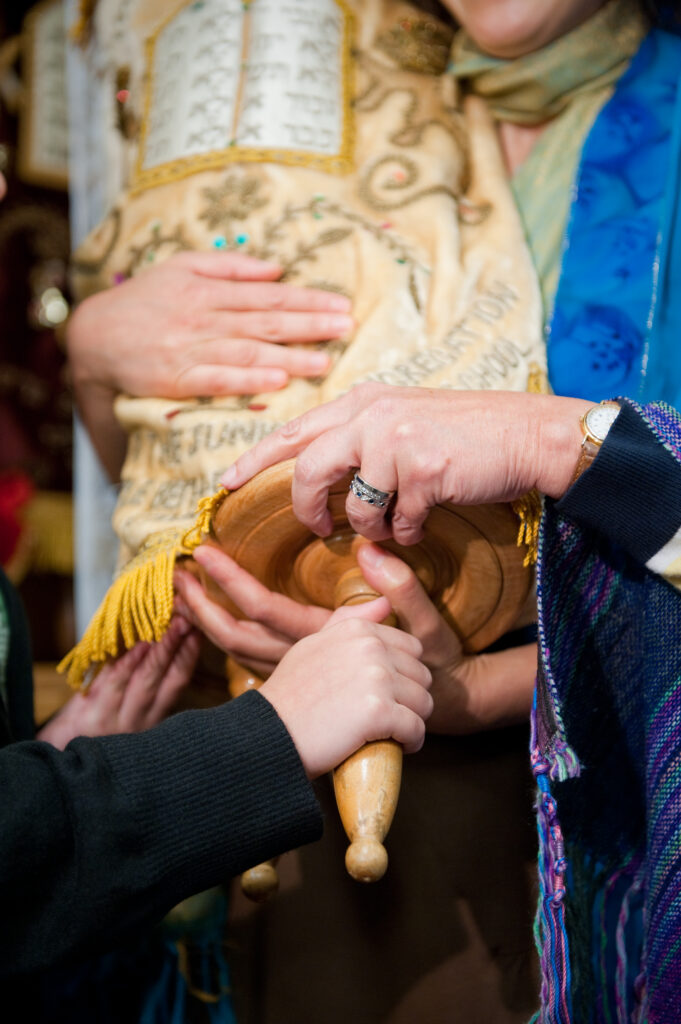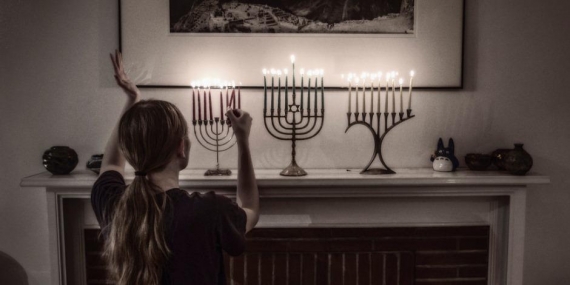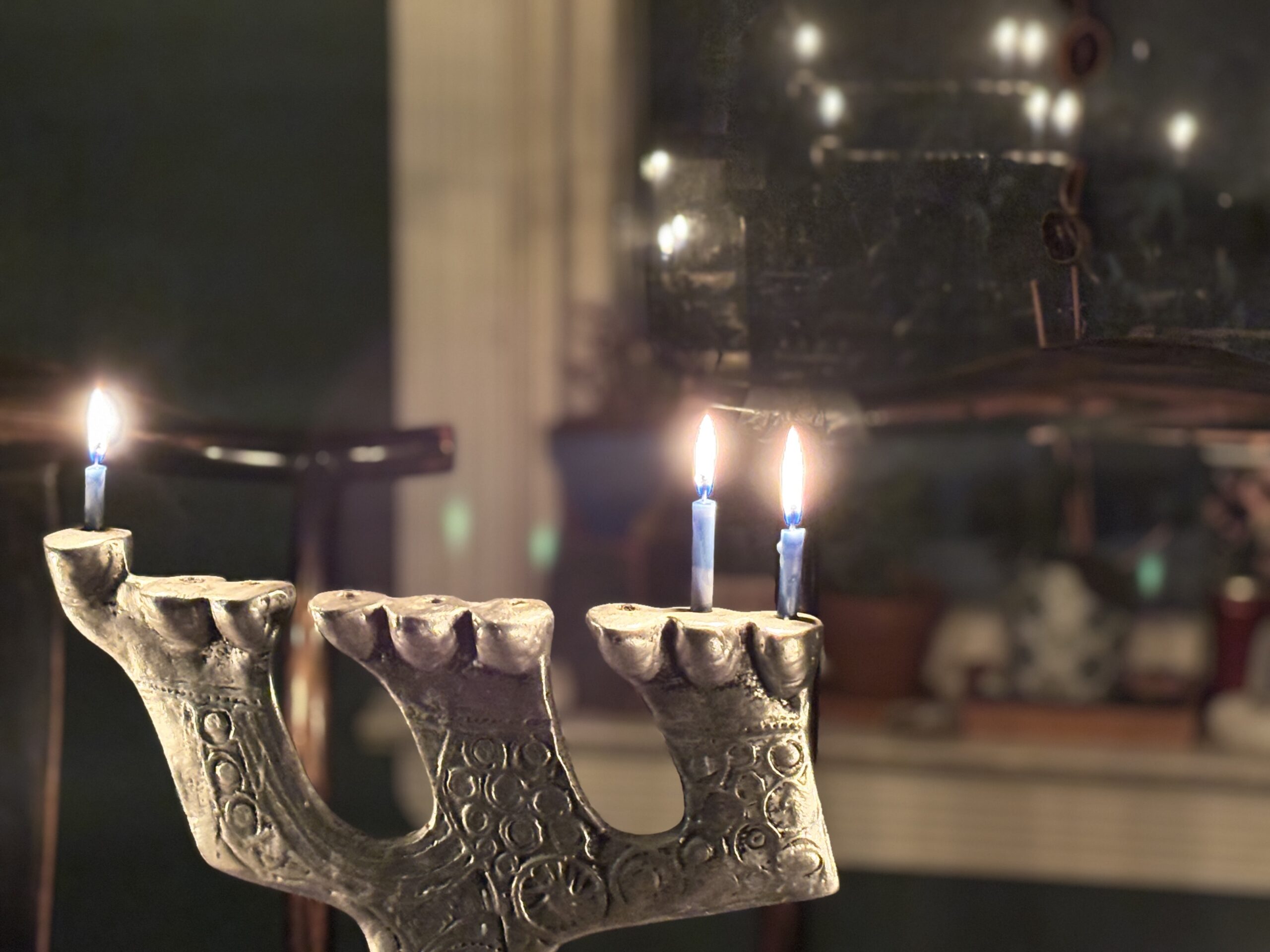Judith’s story is written in the Book of Judith which is codified as the fourth book of the Apocrypha. (The Apocrypha are works written/collected at the same time as most books of the Bible but not included in the Hebrew canon.) Although the story is set in the Babylonian period, the Book of Judith is thought to have originated at the time of the Maccabees. Medieval Hebrew versions understood the story in the context of the Hasmonean revolt.
The Story (paraphrased and excerpted)
Once upon a time a certain king came up against Jerusalem with forty thousand warriors and besieged the city for many days. The Israelites suffered tremendously during this siege and were in great distress. Now, there was a pious widow, Judith, daughter of a prophet, who devised a plan to help her people. She removed her mourning attire and dressed in beautiful clothes and jewels and went out with her maidservant.
When Judith and her maidservant reached the gates of Jerusalem she said to the watchmen: “Open the gates for perhaps God will perform a wonder for us, and I shall slay the king. Israel will be saved by me.” “We will not open the gate,” they said to her, “since we fear that you have fallen in love with one of the king’s cavalry and wish to marry him, and this is why you wish to leave. Or perhaps you will aid in plots against this city so it will be overcome.” “Heaven forbid!” She replied to them. And she took an oath before them.
So the gatekeepers opened the gate and Judith and her helper left Jerusalem. They continued on and eventually entered the royal pavilion and came before the king. Now, Judith was an exceedingly beautiful woman and when the king saw her, she found favor in his eyes. He asked, “Who are you? Where do you come from and where do you wish to go?” And she answered, “I am one of the daughters of the prophets and from my father I heard that you will conquer the city and take possession of it, so I came to seek to save myself and my father’s household when you take the city.” The king replied, “I will do what you ask. I wish to take you as my wife.” Judith agreed.
That night the king held a feast to celebrate his new bride-to-be. At the feast the king drank a great deal of wine, became drunk, and fell asleep. When all the guests left, only Judith and her maidservant remained. Judith turned her thoughts to God, lifted her sword, and cut off the king’s head. Judith then took the king’s head in her hands and she and her maidservant passed unnoticed through the camp until she reached the gates of Jerusalem. There she summoned the gatekeepers and said to them, “Open the gates, for the Holy Blessed One has aided me and I have slain the foe.” But they did not believe her. Judith then showed the head she was carrying to one of the king’s captains. The captain confirmed that it was indeed the head of the king. The gatekeepers believed these words and opened the gate; Judith’s deed became known in Jerusalem. And the people shouted at the top of their lungs, “Hear O Israel, the Lord is our God, the Lord is One!” When the king’s men saw the Israelites they ran to the royal pavilion. Finding their king dead, they fled.
HANUKKAH CUSTOMS
- Lighting the hanukkiyah (the special eight-flame menorah, with a ninth shamas or servant flame)
- Telling the story of Judith: Among the Sephardim (Jews from the East), women traditionally gather on the seventh night to tell Judith’s story and to eat cheese dishes, sing and dance, and receive special blessings. Some Ashkenazim (Jews from the West) used to tell the story of Judith on the eighth night of Hanukkah, in Yiddish.
- Giving gifts to daughters: Some Sephardim call the end of Hanukkah the “New Moon of the Daughters” when parents give special presents to their daughters. Playing dreidel: Dreidel is a classic Hanukkah gambling game. The letters on the dreidel—nun, gimmel, hay, shin—stand for a Hebrew sentence that translates to mean, “A great miracle happened there.” Some say that the origins of the game are German, and that the letters correspond to the directions for playing the game: nichts (“nothing”); ganz (take “all”); halb (take “half”), and stell ein (“put one in”).
- Eating chocolate Hanukkah gelt (coins).
FABULOUS FEMALES
Hannah
The Second Book of the Maccabees records cases of pious Jews who chose to die rather than submit to the Syrians. A celebrated mother (she is referred to in Talmud as Miriam, but the first-century historian Josephus identifies her as Hannah), Hannah expressed unfaltering faith in God as she was forced to watch her seven sons die for refusing to bow to an idol, and then she kills herself.
Hannah’s martyrdom raises the issue of supreme sacrifice for religion. We might ask ourselves where we would draw that line today. Hannah also calls upon us to hold in our hearts those mothers in every generation who must give up their children to war. We are reminded in particular about mothers in Israel today.
The Four Women of Light
According to legend…
Sarah Imeynu (our foremother) lit candles at the beginning of Shabbat. Miraculously, the flame burned throughout the entire week, lighting the tents of Abraham and Isaac.
Rebecca Imeynu (our foremother) inherited the task of lighting these candles when Sarah died. Because Rebecca was also a righteous woman, her candle light shined throughout the entire week as Sarah’s had.
Queen Esther was known as the Ayelet HaShachar (the morning star) who brought a bright, rekindled spirit to the Jews after the dark night of suffering at the time of King Ahashuaros.
Deborah was a wise and important Judge who lived in the twelfth century BCE. In the Torah Deborah is referred to as the “Woman of Lapidot.” In Hebrew, lapid means torch or flame, and so the Talmud refers to Deborah as a “woman of flames.” A contemporary midrash teaches that Deborah made candle-wicks which lit before fire ever touched them; the candles were illuminated from the light inside of Deborah, which grew as she grew.
The Four “Women of Light” remind us that each one of us can share her light without diminishing it. They also invite us to remember the female ancestors in our own families every time we light the Shabbat and Hanukkah candles.













